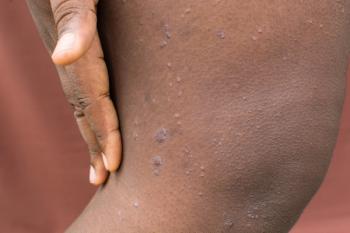
Report Details First Noted Pediatric Case of Autoimmune Myelofibrosis
An adolescent boy went to his physician with a headache that got worse with physical activity. Testing showed autoimmune myelofibrosis.
For the first time, researchers are reporting on an apparent case of a child with autoimmune myelofibrosis (AIMF), an uncommon cause of
Appearing as a
“Autoimmune myelofibrosis (AIMF) is a rare entity that manifests by autoimmune phenomena, bone marrow fibrosis (BMF), cytopenias, and minimal or no splenomegaly,” wrote the researchers, who explained that primary AIMF is characterized by auto-antibodies found in the absence of a known systemic autoimmune disorder and secondary AIMF is characterized by an established autoimmune disease.
The initial laboratory assessment of the 15-year-old showed:
- Leukopenia with lymphopenia, severe normocytic anemia with low reticulocytes, and a normal platelet count
- Some ovalocytes, poikilocytosis, and anisocytosis
- Slightly elevated levels of iron ferritin, transferrin, folic acid, vitamin B12, electrolytes, lactate dehydrogenase, bilirubin, and C-reactive protein
- Normal renal, liver, and thyroid function
- Mildly enlarged spleen (14 cm span) and mild mesenteric lymphadenopathy
After a more extensive laboratory workup, it was revealed that the patient did not have any infectious of
- Erythropoietin levels were evidently elevated.
- Peripheral blood immunophenotyping was negative for paroxysmal nocturnal hemoglobinuria, and genotyping for the JAK2 V617F mutation was negative.
- Hypercellular bone marrow (up to 90%), with slight megakaryocytic and erythroid dysplastic changes and diffuse to focally moderate reticulin myelofibrosis (MF1–2) with foci of paratrabecular fibroblastic and vascular proliferation.
- Trichrome collagen stain was negative.
Notably, “Along the BM, there were several prominent lymphohistiocytic aggregates (CD4-positive alpha- beta T cells, where CD is cluster of differentiation), associated with increased interstitial small lymphocytic infiltration (CD8-inactivated cytotoxic T cells [TIA1-positive, granzyme-B negative]), with no evidence of T-cell lymphoproliferative disease or myeloproliferative neoplasm,” noted the researchers, who emphasized, “These features are compatible with reactive changes due to autoimmune disease.”
Bone marrow immunophenotyping also indicated that the patient exhibited increased myelopoiesis with no monoclonality and no increase in blasts, and the bone marrow genetic panel, which included sequences of JAK2, CALR, and MPL, did not unveil any pathological variants.
While the patient did not fulfill every pathological diagnostic criterion for AIMF that’s been documented for adults, the researchers did not rule out AIMF since the clinical and laboratory characteristics of AIMF have not been established in pediatric cases.
Based on the presumptive diagnosis of primary AIMF, the patients received 60 mg of prednisone twice a day for 3 weeks; the dose was slowly decreased over the following 3 months.
“Within the first weeks of therapy, reticulocytosis appeared and hemoglobin level increased with no further need for transfusions,” wrote the case report authors. “The patient developed new signs and symptoms of arthritis, thus a thorough rheumatological workup was performed. The previous diagnosis of familial Mediterranean fever was reconsidered, but no specific diagnosis was established, although colchicine treatment was not reinstated.”
Reference
Hexner-Erlichman Z, Yakobovich J, Trougouboff P, et al. Primary autoimmune myelofibrosis: a case report in a child. eJHaem. doi: 10.1002/jha2.38.
Newsletter
Stay ahead of policy, cost, and value—subscribe to AJMC for expert insights at the intersection of clinical care and health economics.







































